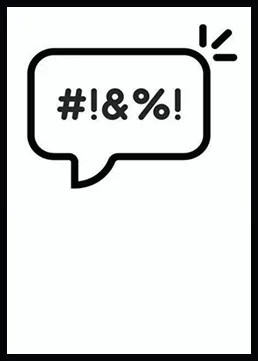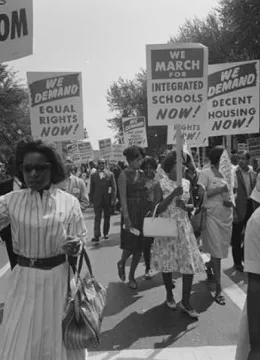Table of Contents
Free Speech Lessons for Freshman Orientation & First-Year Experience Programming
Research & Learn

FIRE, in partnership with New York University’s First Amendment Watch, has developed a series of free-to-use modules, videos, and other resources for universities to utilize when teaching incoming students about their free speech rights and the principles behind the First Amendment.
The video lessons are geared towards universities looking for resources to include in digital first-year experience programming or university web pages explaining student rights. Our hope is that universities will adapt the written lessons and activities for use during freshman orientation, first-year seminars, other campus programs, or classes that need succinct lessons and resources covering:
- Campus Speakers and Counter Protests
- Offensive Speech on Campus
- Talking Across Differences
- Student Protest Then and Now
- Academic Freedom and Classroom Speech
- Limits to Free Speech
- Three Arguments in Defense of Free Expression
- The Role of Student Publications on Campus
- Social Media and Online Speech Rights
- The First Amendment and Campus Life
- Recommended Common Reads from FIRE and First Amendment Watch
If you are an administrator in the field of student affairs or first-year experience and are interested in adopting the orientation program — or if you are a faculty member looking to use our materials in class — check out our FAQ on adopting the materials and reach out to us at orientation@thefire.org. FIRE and First Amendment Watch are more than happy to talk through how to best implement this program on your campus and adapt the materials to your needs!
Fill out the form below if you’d like to chat more about our free speech orientation modules.
Playlist: All Lesson Video Adaptations

Lesson: Campus Speakers and Counter Protests
When controversial speakers are invited to campus, students often have questions about why such speakers are allowed to have a platform and how to respond productively to speakers with whom they disagree. This module covers topics such as viewpoint neutrality in administrative decision-making, freedom of association for student groups, counter protests, and other methods of dissent.
Use: Beyond use during digital or in-person orientations, this lesson can be a tool to teach student government members and student organization leaders about how the university can and cannot respond to controversial speakers.
Content:
- Complete video adaptation for online teaching (length, 6:56)
- Sample remarks and a video clip featuring President Barack Obama discussing controversial speakers for in-person instruction
- Skit script for orientation leaders to perform
- Additional resources for students
Lesson: Offensive Speech on Campus
Offensive speech is nearly unavoidable in diverse environments such as college campuses. With the help of video clips from Nadine Strossen, former president of the ACLU, this module teaches students ways to respond to offensive speech. Additionally, it teaches why the First Amendment protects “hate speech” and when offensive speech loses First Amendment protection.
Use: The video adaptation of this lesson and the script can be used during digital or in-person program orientations to teach students tactics for responding to offensive speech and when offensive speech loses First Amendment protection.
Content:
- Complete video adaptation for online teaching (length, 10:22)
- Sample remarks and short video clips featuring Nadine Strossen, former president of the ACLU, for in-person instruction
- Additional resources for students
Lesson: Talking Across Differences
When students enter college, they will meet others from all walks of life with different opinions, experiences, and backgrounds. This can be a difficult environment to adapt to, so it is important to help students develop the ability to talk across their differences. This skill will help students become more inquisitive and confident in their own knowledge.
Use: Beyond use during digital or in-person orientations, the video adaptation can be placed on university web pages explaining student rights or diversity and inclusion pages to give a fuller picture of how to embrace difficult conversations.
Content:
- Complete video adaptation for online teaching (length, 6:04)
- Sample remarks and a video clip featuring Supreme Court Justices Ruth Bader Ginsburg and Antonin Scalia discussing their friendship for in-person instruction
- Additional resources for students
Lesson: Student Protest Then and Now
Introduce students to the history of student protest on campus and how activists throughout history laid the groundwork for today’s robust protections for student speech. By highlighting the role of university students in the Civil Rights Movement and in fighting McCarthy-era censorship, this module empowers students to be active participants in their university community.
Use: Beyond use during digital or in-person orientations, this lesson can be used in first-year experience seminars so students have the opportunity to participate in discussions about the history presented and its relationship to current events on campus. This lesson can be particularly useful for teaching international students about the history of free speech on American campuses.
Content:
- Complete video adaptation for online teaching (length, 6:12)
- Sample remarks and ample discussion questions for in-person instruction
- Additional resources for students
Lesson: Academic Freedom and Classroom Speech
The principles behind academic freedom are important for students to understand in any college classroom. This module covers the importance of academic freedom in higher education, the rights of faculty, and how students can handle disagreements with their professors. The module also lays out the framework for a faculty-led panel on academic freedom.
Use: Beyond use during digital or in-person orientations, this lesson can be used for onboarding TAs to give them an overview of their rights in the classroom. The framework for a faculty-led panel on academic freedom can also be used as a Constitution Day activity on campus.
Content:
- Complete video adaptation for online teaching (length, 8:32)
- Sample remarks for in-person instruction
- Skit script for orientation leaders to perform
- Discussion questions for a faculty panel on academic freedom
- Additional resources for students
Lesson: Limits to Free Speech
Teach incoming students about when speech crosses the line and loses First Amendment protection. This module focuses primarily on defining and providing examples of freedom of speech limitations such as harassment, true threats, intimidation, and other unlawful conduct. With this knowledge, students can more accurately gauge when their speech, or their peers’ speech, may be impermissible or may result in violations of others’ rights.
Use: Beyond use during digital or in-person orientations, the video can serve as a resource on university web pages explaining student speech rights.
Content:
- Complete video adaptation for online teaching (length, 8:49)
- Sample remarks for in-person instruction
- Additional resources for students
Lesson: Three Arguments in Defense of Free Expression
As free speech continues to be a contentious issue on campus, this lesson reviews three key reasons why free expression is so crucial not only to campus life, but to our democracy as a whole. After examining the role debate and free expression play in the pursuit of knowledge, the harms of censorship, and the legitimacy of government, students will walk away with a clear overview of the philosophy behind the First Amendment.
Use: Beyond use during digital or in-person orientations, the video can serve as a resource on university web pages explaining student speech rights.
Content:
- Complete video adaptation for online teaching (length, 6:28)
- Sample remarks for in-person instruction
- Additional resources for students
Lesson: The Role of Student Publications on Campus
Whether they are recapping last night’s football game or investigating the latest community scandal, student journalists play an important role in campus life. This module is designed with an eye toward student newspaper onboarding and priming incoming journalism students about their basic rights and how to navigate speech-related issues they may face.
Use: The video adaptation of this lesson and the script can be used during digital or in-person journalism program orientations, class lectures, or as part of remarks while onboarding new student newspaper staff.
Content:
- Complete video adaptation for online teaching (length, 5:52)
- Sample remarks for in-person instruction
- Additional resources for students
Lesson: Social Media and Online Speech Rights
The online speech and social media posts of both students and faculty continue to be a growing source of controversy on campuses across the country. With this module, we introduce students to how the First Amendment applies to online speech, as well as how to respond productively to speech they find distasteful without resorting to calls for censorship.
Use: We suggest using this lesson in programming explaining IT policies or codes of conduct. The video can also be placed on university web pages explaining student rights or IT policies.
Content:
- Complete video adaptation for online teaching (length, 8:20)
- Sample remarks for in-person instruction
- Additional resources for students
FAQ: The First Amendment and Campus Life
These frequently asked questions and answers provide the basic information incoming students need to know about how the First Amendment applies to speech on campus. This FAQ is meant to be used as a reference for students, which administrators can link to or copy on their own sites. FIRE and First Amendment Watch are available to help adapt the language to best suit a particular campus’s needs.
Use: This FAQ can be handed out to new students. Additionally, the text or video can be used on university web pages explaining student rights.
Content:
- Complete video adaptation for online teaching (length, 4:40)
- Written FAQ for use on university web pages or to be handed out
- Additional resources for students
Resource: Recommended Common Reads from FIRE and First Amendment Watch
Assigned readings with a strong emphasis on the value of free expression and the follies of censorship can go a long way in preparing incoming students to be intellectually curious when they arrive on campus. From banned books that warn against censorial regimes to international stories about fighting censorship to books chronicling the First Amendment’s role in America’s media landscape, this list has a book or document fit for any academic program.
Use: Any of these books and resources can be assigned in classes or as common reads for incoming students.
Content:
- List of suggested common reads and related resources including podcast interviews with authors, analysis, and sources for First Amendment news and commentary










